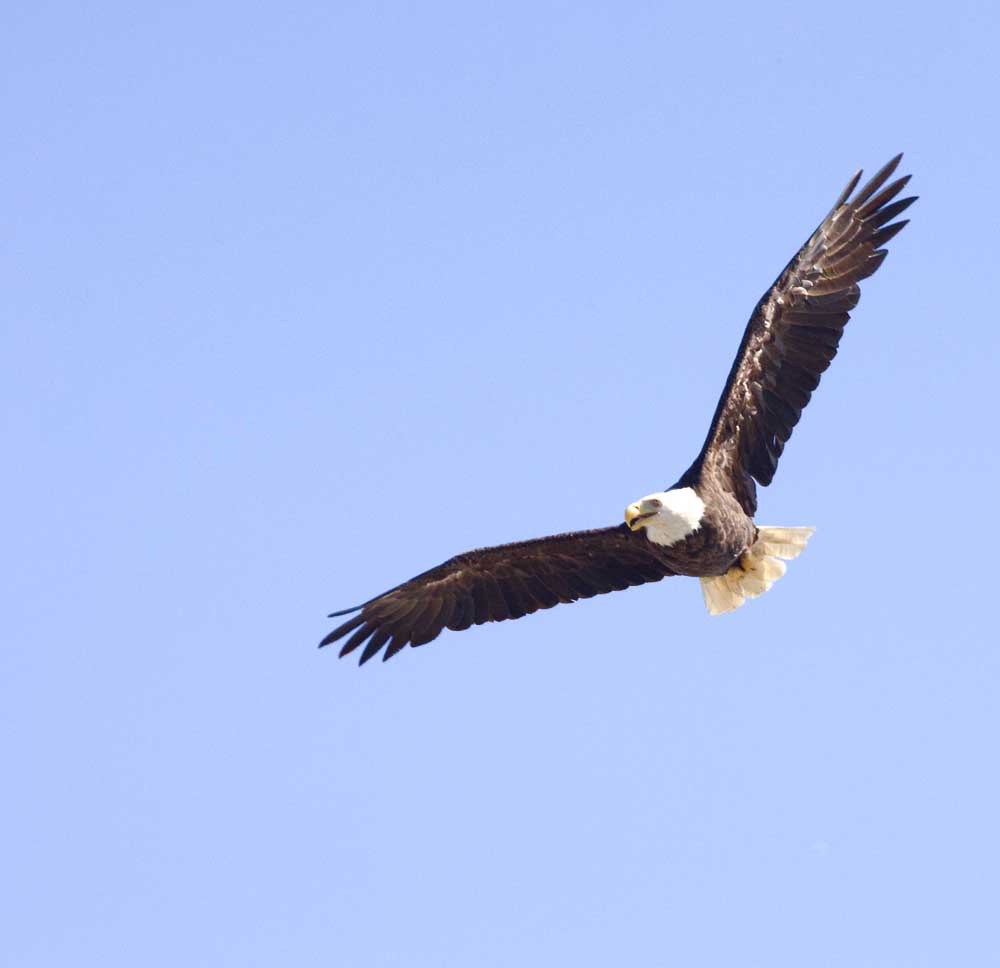Birding: Bald eagles have a new enemy
Published 12:28 pm Friday, October 25, 2024

- “Bald eagles are powerful fliers — soaring, gliding, and flapping over long distances. In one of several spectacular courtship displays, a male and female fly high into the sky, lock talons, and cartwheel downward together, breaking off at the last instant to avoid crashing to earth,” according to Cornell Ornitholgical Lab.
I saw two bald eagles today soaring high in the sky together. I haven’t seen or heard any for quite some time. Raptors, in general, have been few and far between during this year’s summer and fall seasons. A few readers of this column have noticed this phenomenon, too.
Two readers recently drew my attention to an article published in the Washington Post on Sept. 5, 2024. It’s title, “In eagle nirvana, avian flu is decimating America’s national bird.” It is such an important discussion that I have chosen to summarize the Post’s article about the avian influenza issue, and its effect on our national bird.
“Nationwide, avian influenza has killed at least 606 bald eagles in 45 states according to findings from the Animal and Plant Health Inspection Service, which is part of the Department of Agriculture.” (WA Post, Sept. 5, 2024). The Post article is quick to point out that this figure just represents the eagle remains that have been recovered and tested. Moreover, it is thought that this number does not reflect the total decimation. In fact, it is only the tip of the iceberg.
In 2007 the bald eagle was removed from the list of threatened and endangered species. In 2024, 17 years later, the bald eagle has come up against a new enemy, namely avian influenza. The recovery of this species after the banning of DDT, PCBs and hunters’ lead shot pellets was nothing short of spectacular. These efforts helped the eagle population to recover. It numbered 316,700 individuals and 71,400 nesting pairs as of 2020 (American Eagle Foundation). It is a clear demonstration of what effect a concerted conservation effort can have when it is geared specifically toward the recovery of an endangered or threatened population.
Historically, according to the Post’s article, migratory waterfowl and wild birds have been carriers of the avian flu disease and were spreaders of it but they don’t normally show symptoms of it. Animal and Plant Inspection Services program coordinator Julianna Lenoch indicates that currently “we are seeing vast amounts of disease and death in bird populations around the world” due to the current outbreak of avian influenza. She also states that it isn’t known for absolute certainty why this current outbreak has taken such a large toll on wild birds.
Avian flu refers to the disease caused by infection with avian influenza Type A viruses. These viruses occur naturally among wild aquatic birds throughout the world, including ducks, geese, swans, terns, gulls and shorebirds (WDFW, Internet 2024). Research conducted by the Southeastern Cooperative Wildlife Disease Study at the University of Georgia led researchers to conclude that bald eagle losses attributed to avian flu indicate an emerging threat to other predatory and scavenging birds across North America. They further argue that according to federal data, “hundreds of hawks and owls have already been felled by the disease.”
Once again, the survival of our national bird is threatened. The only way to know for sure the how devastating the effects of avian influenza are on our raptor populations is to examine dead birds for the cause of their demise. Even though the collection of dead birds is labor intensive, it seems as though raptor researchers in North America are on it. Their work will keep us updated on the impact of avian flu on those species that feast on wild ducks and waterfowl and whether there is a solution or a workable conservation effort that can save the bald eagle from its new enemy, avian influenza.





